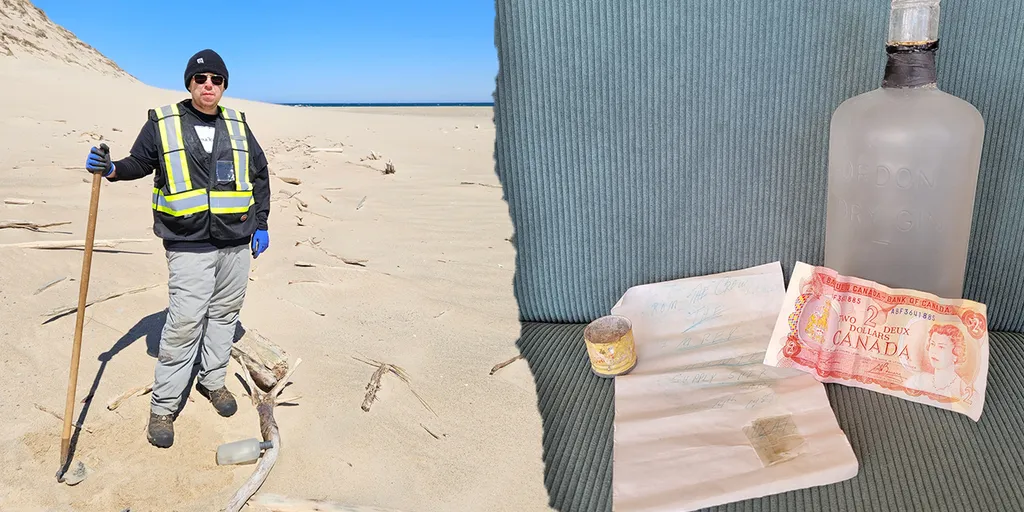A vessel from the American Revolution that was unearthed at the site of the World Trade Center is being put on display at a museum. (Credit: New York State Museum)
A peculiar message in a bottle recently surfaced on the shores of a remote Canadian island.
The discovery was announced by the Sable Island National Park Reserve in a May 23 Facebook post. The small island is located off the waters of Nova Scotia.
In the post, park officials said the bottle was discovered by Mark Doucette, an archaeology technician from Potlotek First Nation, a community of Mi'kmaq Native Americans.
"The message is very faded, but we could make out that the bottle was sent to sea Jan. 14, 1983, from a resupply ship operating near Sable Island," the post noted.
Speaking to Fox News Digital, Parks Canada representative Jennifer Nicholson said that, after opening the bottle, the first thing officials noticed was its strong smell.
"Well, first off, you could still smell the gin!" she recalled. "Even 40 years later, that hadn't faded."
The gin dissolved some of the ink on the letter, but it was still faintly visible. Nicholson said that the paper was still damp from being in the bottle for four decades.
"As it dried, you could make out more of the message - and you could see the impressions left behind by the pen," she said.
The letter had scant details about the ship it was sent from, which required some research from park officials.
"It was a little hard to make out the ship's name at first. You could tell it ended with 'Sea Hunter,'" Nicholson said.
"We did a little bit of digging," she continued, "and one of the archaeologists found that there used to be a resupply ship called the Wimpey Sea Hunter. It was a British supply ship built in Devon in 1982."
She added, "There were crew names on the back as well. We haven't been able to track any of the crew down after this time. But if they're out there, we'd love to hear from them!"
The bottle also contained a two-dollar bill from 1974, which featured a portrait of young Queen Elizabeth.
"We've had appliances like TVs and fridges wash up on the beach - fridges especially."
"The Bank of Canada replaced the two-dollar bill with the [two-dollar coin] in 1996, and some of our Sable team had never seen a two-dollar bill before," Nicholson noted.
It's not unheard of for similar bottles to wash up on Canadian shores. Nicholson said that one message in a bottle is usually found in Nova Scotia per year.
"A lot of them are from the 1980s," she said. "The oldest one my colleagues found was set to sea in the 1930s from a boat that was sailing from the U.K. to North America ... that was really neat."
Other than that, Nicholson said park officials have seen "almost everything" wash up on shores.
"We've had appliances like TVs and fridges wash up on the beach - fridges especially, because they have a lot of insulation, so they float," she said.
"We've had things with Russian labels washing up. We found a little pill container that was from France. And a lot of the typical waste you would imagine - plastic water bottles, other single-use plastic items."
For now, the bottle has been sent to the Parks Canada archives for further study and preservation.
Bottles containing decades-old messages are often found across the world. In 2023, a French man stumbled across one that was sent by a Massachusetts fifth grader in 1997.
